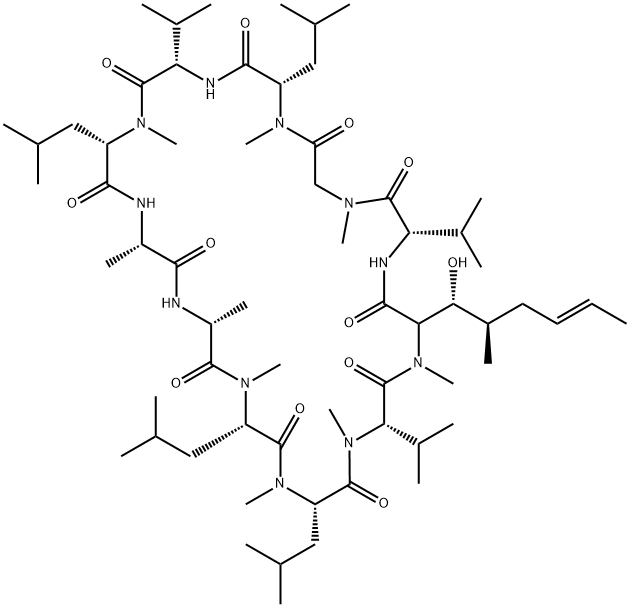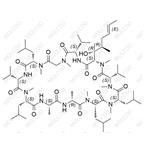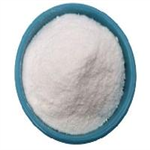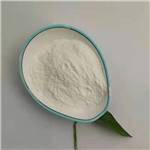Cyclosporin D is a minor analogue of the cyclosporin family which is only weakly immunologically active. Cyclosporin D is a potent inhibitor of tumour-promoting phorbol esters on mouse skin in vivo, and a potent inhibitor of calcium/calmodulin-dependent EF-2 phosphorylation in vitro.
cyclosporin d is an immunosuppressive agent [1].cyclosporin d (csd) is an analogue of cyclosporine a with weak immunosuppressive activity. cyclosporin d has been used as an internal standard for the quantification of cyclosporin a. in human multidrug-resistant ovarian cancer cells, cyclosporin d significantly overcame adriamycin resistance [2]. in lymphocyte, csd weakly inhibited pha-, pwm-, and pma + ca2+-induced cell proliferation [3].in mice, csd inhibited edema in mouse ear and alkaline phosphatase activity in mouse skin induced by tpa by 98% and 88%, respectively. in cytosol of mouse pancreas, csd inhibited the ca2+/calmodulin-dependent phosphorylation of the elongation factor 2 (ef-2) and the tpa-induced increase of ef-2 [1]. cyclosporin d was effective in inhibiting p. falciparum parasite in vitro and p. berghei malaria parasite development in vivo when administered orally [4].
[1]. gschwendt m, kittstein w, marks f. the weak immunosuppressant cyclosporine d as well as the immunologically inactive cyclosporine h are potent inhibitors in vivo of phorbol ester tpa-induced biological effects in mouse skin and of ca2+/calmodulin dependent ef-2 phosphorylation in vitro. biochem biophys res commun, 1988, 150(2): 545-551.
[2]. mizuno k, furuhashi y, misawa t, et al. modulation of multidrug resistance by immunosuppressive agents: cyclosporin analogues, fk506 and mizoribine. anticancer res, 1992, 12(1): 21-25.
[3]. sadeg n, pham-huy c, rucay p, et al. in vitro and in vivo comparative studies on immunosuppressive properties of cyclosporines a, c, d and metabolites m1, m17 and m21. immunopharmacol immunotoxicol, 1993, 15(2-3): 163-177.
[4]. uadia po1, ezeamuzie ic, ladan mj, et al. antimalarial activity of cyclosporins a, c and d. afr j med med sci, 1994, 23(1): 47-51.



